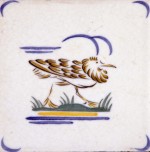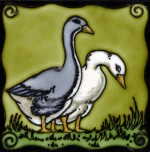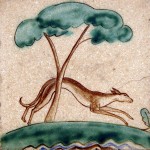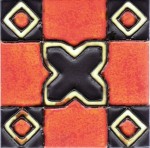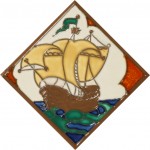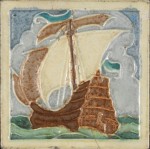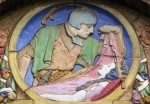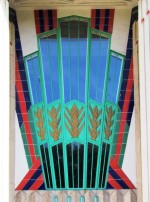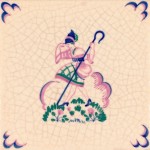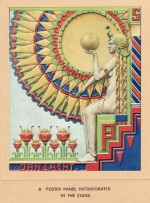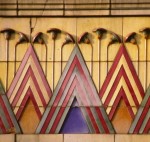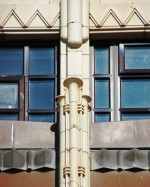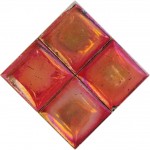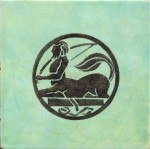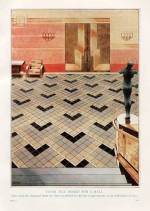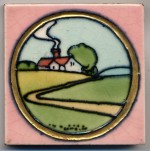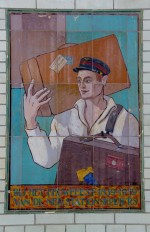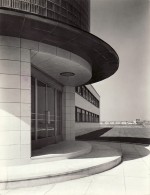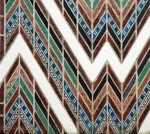Hans van Lemmen | Historical Tiles writing about tiles and architectural ceramics
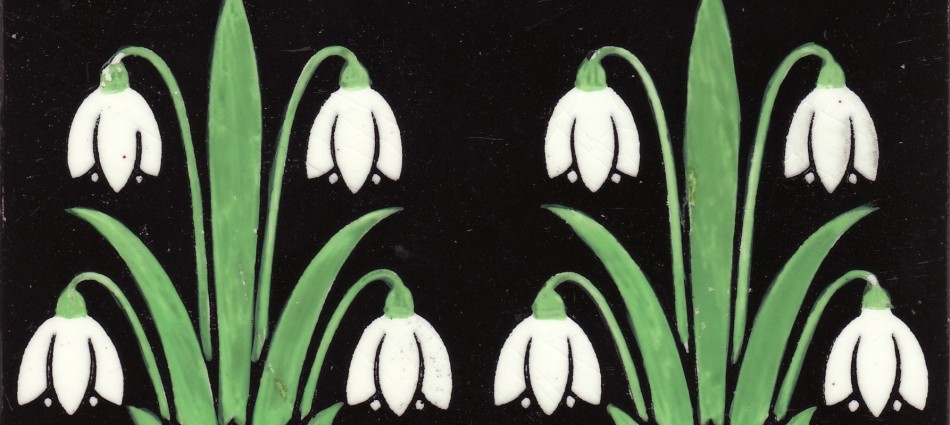
ART DECO TILES
Art Deco tiles are among the most elegant and stylish tiles in the history of tiles. The term has been derived from the influential Exposition Internationale des Arts Decoratifs held at Paris in 1925. Although Art Deco has underlying design tenets in which the dictum ‘less is more’ occupies a central place, there is surprisingly great diversity in how Art Deco characteristics found expression in figurative and abstract design. It affected all facets of interior and exterior design including ceramic tiles and architectural faience. Art Deco tiles show either patterns with abstract forms of square, triangles and circles executed in bright strong colours or streamlined figurative motifs of humans, animals, ships and landscapes. In Britain firms like Carter & Co. produced and extensive range of picture tiles, but fine Art Deco tiles were also made by Pilkingtons, Candy Tiles and the firm Malkin Tiles. There were also small firms who specialised in decorating Art Deco tiles like Dunsmore in London and Packard & Ord in Marlboroough. A small selection has been posted on this page.
- Tile designed by E. E. Stickland and made by Carter & Co., c. 1930
- Tile designed by Harold Stabler and made by Carter & Co., c.1938
- Tile made by Pilkingtons, c. 1930
- Tile made by Packard & Ord, c. 1938
- Tile made by Pilkingtons with orange-vermilion glaze made from uranium oxide (which is lightly radioactive), 1931
- Tile made by Minton Tiles, 1930
- Tile made by Candy Tiles, c. 1920
- Faience panel depicting The Soldier and the Princess designed by Gilbert Bayes above a window at Sidney Street Estates, Camden, London, 1931
- Tiled entrance of the Hoover Building, London, c. 1932
- Tile designed by Dora Batty and made by Carter & Co., c. 1937
- Abstract Art Deco tile made by the American Encaustsic Tiling Co. c. 1930
- Tile made by Dunsmore, c. 1930
- Neo-Egyptian faience design by Shaws of Darwen, 1932
- Neo-Egyptian faience on former Carlton Cinema, Essex Road, Islington, London, 1930
- Detail of Neo-Egyptian faience on former Woolworth Building, Blackpool, 1938
- Lustre tiles c. 1935
- Tile made by Carter & Co and designed by Dora Batty, c. 1930
- Tile made by Dunsmore with sign of he Zodiac, c. 1930
- Design for floor with Carter Art Deco tiles 1937
- Tile made by Maw & Co., tube lined, c. 1923
- Tile panel on Haarlem Station, Holland, dated 1937
- Berlei lingerie factory, Slough, built 1937, demolished 1982
- Proto Art Deco tiles on the facade of the house of the architect Edgar Wood in Hale near Manchester 1914- 1916.
- Panel on the facade of W.H. Smith bookshop in Llandudno, Wales. Made by Carter & Co. c. 1930.

